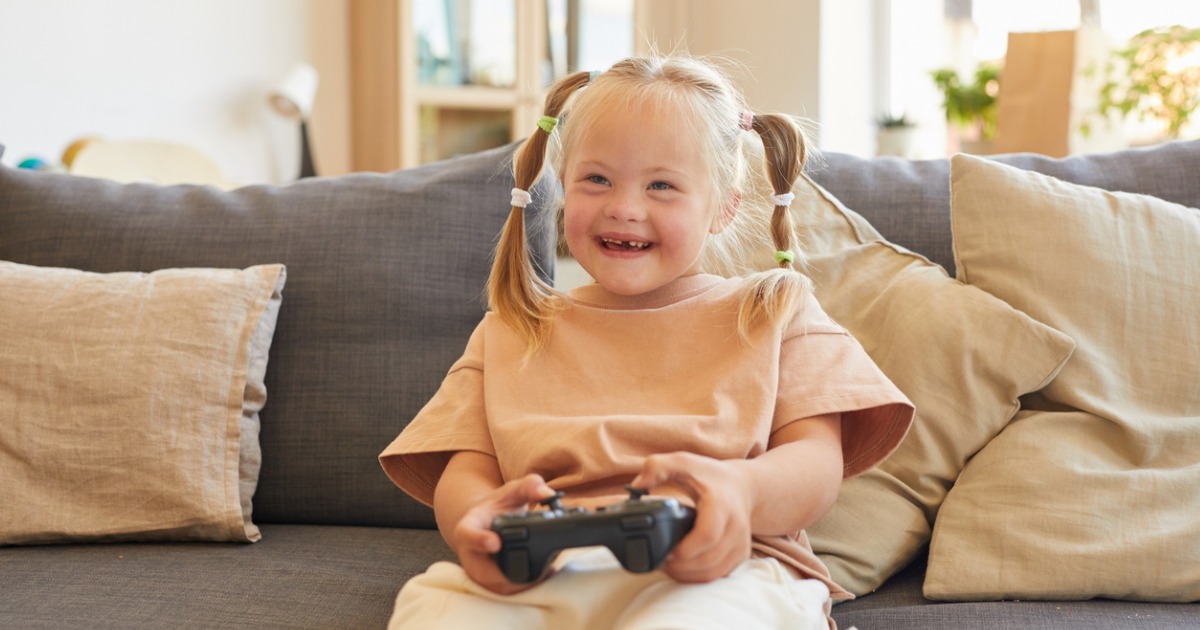Q: How do you work with kids and families who are completely new to gaming?
A: For anyone, learning a new skill is a great way to boost confidence and morale. Being able to learn this new skill gives kids a sense of mastery and control in a hospital environment, where so much control is being taken from them. So because of that, I work with patients to introduce video gaming as a new way to lift their spirits or change up their routine. Each of my gaming sessions are personalized to each patient based on their unique needs and their parent/caregiver’s preferences when it comes to technology.
Q: Generally, what are some overall benefits of gaming?
A: In addition to its social benefits, gaming has therapeutic benefits that aid in easing stress or anxiety. Two styles of games could be:
- “Cozy” games: These offer relaxation with a focus on feel-good objectives, like helping NPCs (non-player characters) with tasks or building a farm at your own pace.
- Fast-paced, high-energy games: These games involve a lot of decision making, which can strengthen critical-thinking skills, strategy building, communication with teammates, and problem-solving techniques—all while in a low-risk environment.
Both styles of games can regulate emotions, improve mood, build resilience, and soothe feelings of distress.
As a lifelong gamer, myself, I’ve always enjoyed the strong community around gaming, as well as the feeling of progression in video games. Just like in any sport or craft, the sense of putting work into something until you meet your goals and reach the “endgame” is the reward that’s fueled my love of video games to this day.
Q: Beyond being a passion or hobby, where else can video games take us?
A: The field of video games is ever-changing and now a significant piece of modern culture. Many schools are even integrating video games like Minecraft: Education Edition into their curriculum! Kids can easily apply their enthusiasm for gaming to their education. That enthusiasm can then venture into many different avenues of STEAM (Science, Technology, Engineering, Arts, and Mathematics) careers. For example, there are roles like programmers, animation designers, writers, audio engineers, marketers, and positions like mine!
Q: What about the risks of gaming? Can you explore those a little bit?
A: We all know that everything carries risks. Of course, the first conversation I have with parents/caregivers in the hospital is about their preferences in how their child utilizes technology. This helps me create customized recommendations that are developmentally appropriate for each child. I’m passionate about preserving the innocence of gaming, but having this conversation is still important to highlight the things to be mindful of.
To bring in my sport analogy again, playing a sport poses its own risks. Risks that could include physical injury, losing balance between sports and schoolwork, experiencing conflict between teammates, and more. With gaming, the risks are similar to those of sports in many ways.
Risks of physical injury are not as likely, but socially and emotionally, the risks are parallel. It’s also important to read the ratings of games to have a better understanding of each games’ exposure to certain content as well as find a harmony between gaming and other areas of your child’s life.


